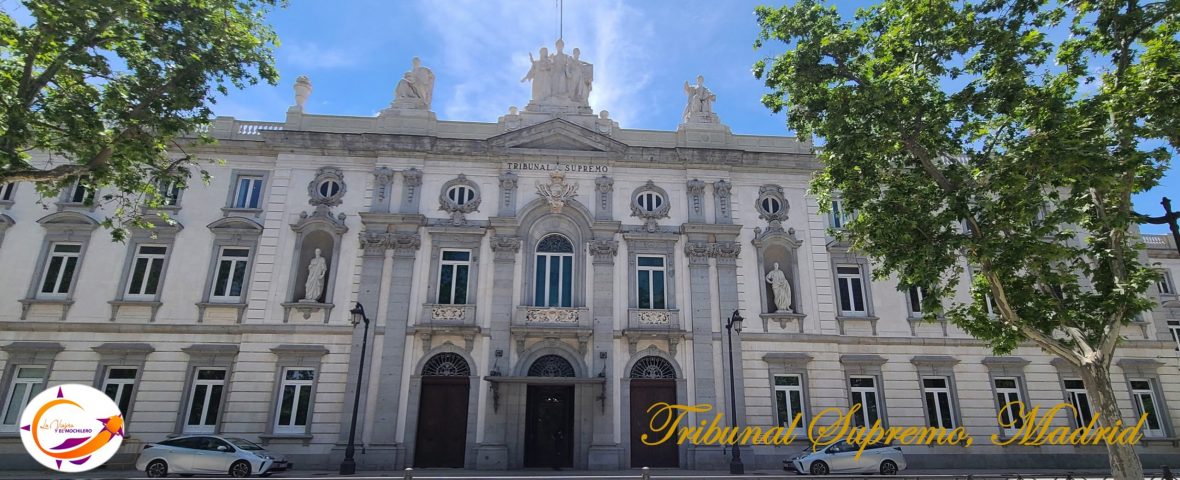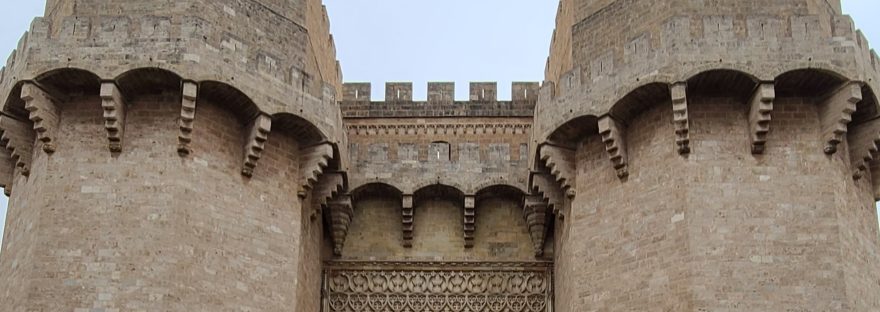One of the best spots where you can enjoy fabulous views of Valencia is from atop of the Serranos’ Towers, also known as Serranos’ Gate. They are located in the Plaça dels Furs, being the main entrance to the city. Its name is due to its orientation towards the region of Los Serranos, to the north, on the way to Zaragoza, Spain.
The Serranos Towers of Valencia are considered to be one of the finest examples of 14th century military architecture. Its main use for a long time was to serve as a defense in any siege or attack on the city. It was also used as a triumphal arch, and is still considered today as the main entrance to Valencia. It is the only vestige, along with the Quart Towers, that survives of the accesses of the ancient wall, dismantled in the mid-nineteenth century to open up to urban expansion. Since 1931, it has been declared an Asset of Cultural Interest.
The very thick walls of the Serranos Towers were made of very solid masonry, since its main function was to serve as a fortification, as mentioned above. Later it was covered with limestone ashlar masonry, mainly from Alginet, a municipality in the Valencian Community.
The limestone offered a more elegant and ostentatious character to the surface, to fulfill the other function, for the more commemorative acts, such as the entrance of ambassadors and kings, since the door of the towers was considered the main entrance.
The complex is formed by two polygonal towers joined by a central body, where the round arched door opens. The towers are composed of three vaulted floors. Of the central body the exterior gothic decoration stands out. Its construction is due to master builder Pere Balaguer, who was inspired to build the Serranos Towers by other Gothic doors with polygonal towers.
Work began on April 6, 1392 and six years later, on March 19, 1398, work was completed. A year before the end of the works, the monumental stone staircase was designed, which enlarged the building and facilitated its use in the welcoming festivities. The moat around the gate is defensive and was originally covered with water.
In 1586, after the fire of the city of Valencia, the Serranos Towers were used as a prison for nobles and knights. Already in 1887, the prisoners were transferred to the convent of San Agustín. A very important fact is that, by the time of the Spanish Civil War, part of the artistic treasures of the Prado Museum were hidden and protected in these towers.
In 1936, in order to ensure the proper conservation and protection of the works of the Prado Museum, a reinforced concrete vault was built over the floor of the second floor, since the works were housed one floor below. A meter of rice husk and another meter of earth were piled on top of the vault to serve as a shock absorber in case of an explosion. In addition, one meter of soil was placed on the second floor and the terrace was covered with earthen arches. A humidity and temperature control system was also installed. All this was carried out according to the project and under the direction of the architect of the Junta Central de Salvamento del Tesoro Artístico, José Lino Vaamonde.
The most outstanding event that nowadays takes place in the Serranos Towers is the crida, an activity that takes place on the last Sunday of February. It is the welcome to the Fallas festival to Valencians and visitors, proclaimed by the Fallera Mayor de València from a tribune erected in front of the exterior façade of the towers.
Now, the best part of the visit to the Serranos Towers is to go up to the different levels and enjoy the great views of Valencia. You can also take the opportunity to take a photo for posterity.
***************
Resources:
https://es.wikipedia.org/wiki/Torres_de_Serranos
https://www.visitvalencia.com/que-hacer-valencia/cultura-valenciana/monumentos-en-valencia/torres-serranos
https://www.barcelo.com/guia-turismo/es/espana/valencia/que-ver/torres-de-serranos/https://www.rutasconhistoria.es/loc/torre-de-los-serranos

